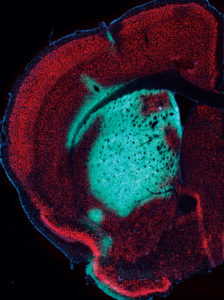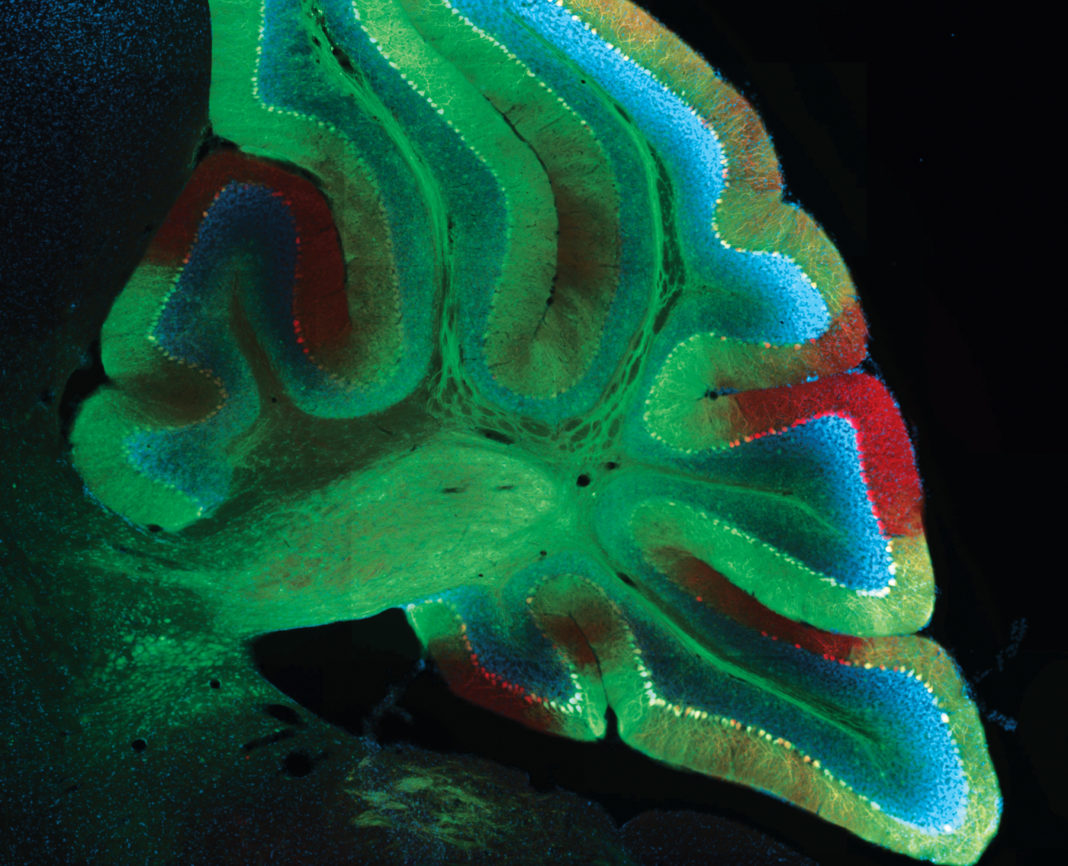It is one thing to anticipate what gene therapy will look like in 5 years, let alone 10. The deeper we peer into the crystal ball, the less we can rely on what we see. So, let us put scrying and intuition aside. Instead, let us take a close look at gene therapy’s present state and how it has come to be. We will identify the forces behind gene therapy’s recent advances—as well as newly emergent forces—and we will keep in mind that these forces will likely wax and wane. Then we will be better able to predict what gene therapy will look like in the near future (or even the not-so-near future).
Vector improvements
Gene therapy can be divided into in vivo and ex vivo treatments. In the former, genetic material is delivered directly to the host by means of a vector such as a virus or nanoparticle. In cell-based gene therapies, on the other hand, genetic material is introduced to a patient’s cells ex vivo, and then the modified cells are returned to the patient. Perhaps the most prominent example of the ex vivo approach is chimeric antigen receptor (CAR) T-cell therapy.
For right now, the field of in vivo gene delivery is “handcuffed to AAV [adeno-associated virus] vectors,” says Charles Gersbach, PhD, Rooney Family Associate Professor of Biomedical Engineering at Duke University. The two FDA-approved in vivo therapies, as well as most trial vectors on the horizon, utilize AAV. “AAV has been great in many ways,” Gersbach continues. “It is very stable in nondividing cells, and it is relatively efficient in getting genes to the liver, retina, heart, and muscle, as well as the central nervous system.”

CEO, Locanabio
But it presents challenges as well. Perhaps the one most cited is immunogenicity. “There is a certain percentage of patients that already have preexisting antibodies to your serotype, so you have to exclude them in your trials, or from treatment,” points out James Burns, PhD, CEO of Locanabio. Because it engenders an antibody response, the vector can be administered only once.
AAV is “very expensive to produce,” Gersbach adds. “And there is still a lot of work to do to figure out how to deliver to other tissues, like the lungs, kidneys, and pancreas.”
There is a lot of very good work going on to develop new capsid designs, offering better immune profiles and better tropism. In the next few years, not a decade, “we’ll start to see more and more of these novel vectors,” Burns predicts.
Researchers are exploring immunosuppression regimens, as well as ways to temporarily clear antibodies from the circulation to circumvent the immune response. Progress is also being made in nonviral delivery approaches such as lipid nanoparticles. These can potentially be engineered to sidestep the immune system, to carry out new functions, and to target specific tissues.
Applications within our grasp
To date, just two in vivo gene therapies have been approved in the United States. Both are for what Gersbach considers the most basic, first-generation gene therapy: take a gene, put it into a vector, and use it to supplement or replace a missing gene product.
The first of these was Luxturna, a treatment for an inherited retinal dystrophy. “It is a subretinal injection of a very small amount of vector into a very small space that is immunoprivileged, where not a lot can go wrong from a safety perspective,” he notes. “That was an obvious entry point for gene therapy.”
The second approved therapy, Zolgensma, is used to treat spinal muscular atrophy (SMA), a fatal inherited disease affecting young children. The therapy offers “a high reward/risk ratio because the disease is fatal,” Gersbach observes. “You can intervene very early and have a dramatic effect by saving these kids’ lives. And because you can intervene when they are babies. You do not have to get as much vector, and the safety issues are not as significant.”
There are many reasons to be optimistic about other first-generation therapies. “The next five years is about getting some of the lowest low-hanging fruit approved,” Gersbach declares. These will use already-existing AAV vectors to target a replacement gene for diseases such as hemophilia, Pompe disease, glycogen storage disorders, and muscular dystrophy.
Genomics and other omics
The ability to alter the genome (or its functionality)—not just add to it—has revolutionized molecular biology–based research. Not surprisingly, gene editing technologies based on zinc finger nucleases, transcription activator-like effector nucleases, and CRISPR/Cas9 nucleases, and other even newer gene editing technologies, have found their way into the world of gene therapy. Even nuclease-free gene editing, making use of the endogenous homologous recombination processes, has hit clinical trials.
“We are just getting the very first results from the very first trials,” Gersbach says. “Those things will not be approved until the 3–10-year range. Maybe there is an outlier case for the CRISPR therapeutic sickle-cell disease and β-thalassemia treatments.”
Some of the technologies currently being investigated include ways to alter genetic regulation. In fact, the CRISPR-based sickle-cell disease and β-thalassemia treatments are “working on regulatory elements, not on the actual beta globin gene,” points out Chris Mason, MD, PhD, professor of cell and gene therapy at University College London, and CSO of Avrobio.
Most of all the common diseases have a large epigenetic component, much of it found in the enormous (and currently underexplored) noncoding fraction of the genome. “If you really want to tackle the big diseases in life, you have to climb aboard and think of gene therapy modifying the epigenetics,” Mason insists. “You can tune the genes. It can be reversible, or you could make it permanent. A short burst of gene therapy could allow epigenetic modification with switches. Methylation could be switched on or off.”
Along similar lines, researchers are developing ways to temporarily change gene expression by targeting RNA. “There are a number of modalities which we are going to explore,” Mason notes. “Ten years from now, RNA-targeted editing and epigenetic editing technologies should be much bigger. The editing world is getting a lot of traction and investment now.”
Venturing into new depths
“Complexity is certainly going to go up,” Mason continues. “We’re going to have to look at putting in a single gene, or multiple genes, and at how we control those genes. We may even add elements for monitoring and feedback.”
Many diseases are polygenic, and “that is something we will come to at some point,” says Fred Chereau, president and CEO of LogicBio Therapeutics. Gene therapy will be an important technique to treat monogenic and polygenic diseases and, potentially, nongenetic diseases. “Maybe it will be able to express antibodies,” he speculates.
Mason also reminds us not to forget about the elephant in the room: enhancements. It is better for society to get ahead of bioengineering, including nonmedical bioengineering, through education and dialogue, than wait until the conversation is forced upon us.
Economic considerations
For a number of reasons, gene therapy has focused on rare diseases, developing therapies where regulatory approval may be possible after testing on a relatively small number of patients with a high unmet need, and where the presence of predictive biomarkers allows for an enrichment of the trials, points out Ariel D. Stern, PhD, Poronui Associate Professor of Business Administration at Harvard Business School, who specializes in the economics of new technology in healthcare.
Stern’s research has shown that trials tend to be concentrated in just a handful of medical specialties. “Ten years from now, we will still see a lot of gene therapy in oncology, neurology, and ophthalmology,” she predicts. “I think we will probably see relatively little in pulmonary.”

President and CEO
LogicBio Therapeutics
In 10 years, if nothing goes wrong, and if the field is socially responsive, we could see gene therapy expanding to treating larger populations for much more prevalent diseases, Chereau opines. If we continue to improve gene therapy products (for example, by devising low-dose treatments) and production systems (by building high-yield manufacturing operations), we may decrease the cost of goods. “We may find a way to sell to countries less [economically] favored than Europe,” Chereau suggests. “But not in the next five years.”
Economics is an issue for gene therapy in the developed world as well. “Both the payment systems as well as the regulatory approval processes that we have today we have inherited from the 20th century,” Stern says. “We are left with a situation where we have really promising new technologies that do not fit into the paradigms that we are used to using for regulating and paying for healthcare.” To give a simple example: health insurers in the United States have to balance their books every year, and with a double-digit number of patients changing insurers each year, there is a disincentive to invest in preventative and curative therapies.
Asking what a reasonable payment model will look like will be an important question for health policy makers. Some ideas that have been put forward include drug mortgages, where the cost of a treatment is amortized over time. So-called milestone-based, outcome-based, and fee-for-success pricing contracts have all been proposed.
Stern sees better data collection as one of the keys to tracking what success looks like: “I like to think that 10 years from now, we will have a number of really thoughtful high-quality registries set up for gene therapies.”
The long(er) view

In the future, gene therapy will be done earlier. It will, in many cases, be prompted by good screening before any signs or symptoms occur. Treatment decisions could even be informed by tests of egg and sperm. “Then patients would benefit for their entire lifetimes,” Mason prognosticates.
In other cases, there will eventually be machines at the point of care to extract, transduce, and return cells, all in one continuous process. Such a process would be most easily carried out with blood cells. “You are going to have to have some very good algorithms in there that really allow you to know with high confidence that you have cells you want,” Mason details. “I expect to see better mobilization agents and then better methods of getting enrichment. Forty years from now, that is absolutely the way you will do it. It will not happen in 10 years. There are too many steps we do not understand.”
If advances in editing continue, you can anticipate that “in 40 years, the technology may be available to change any base pair of anyone’s genome, in any tissue, in any cell type,” Gersbach says. But what, he asks, would that look like from a regulatory and business perspective?



